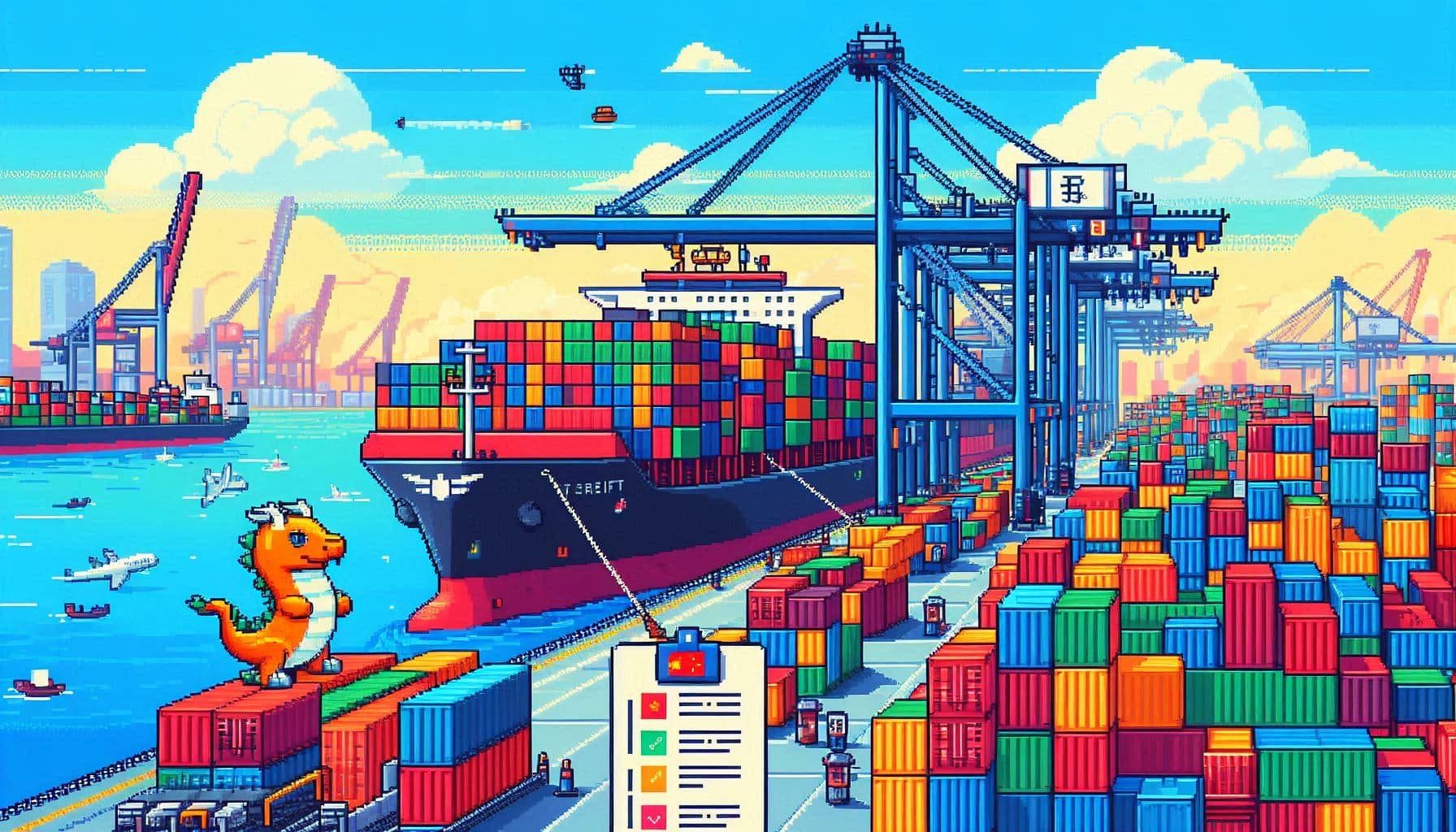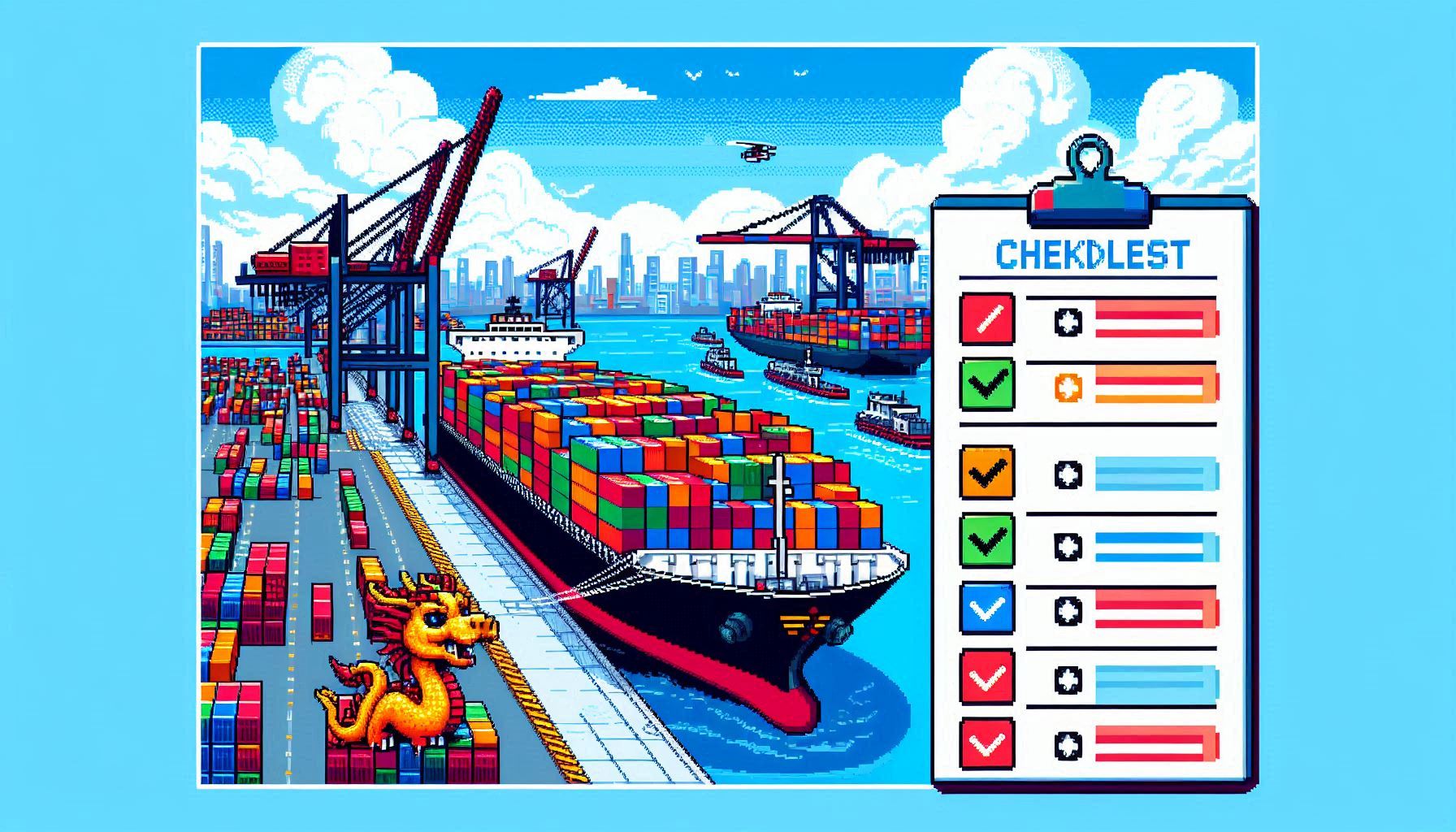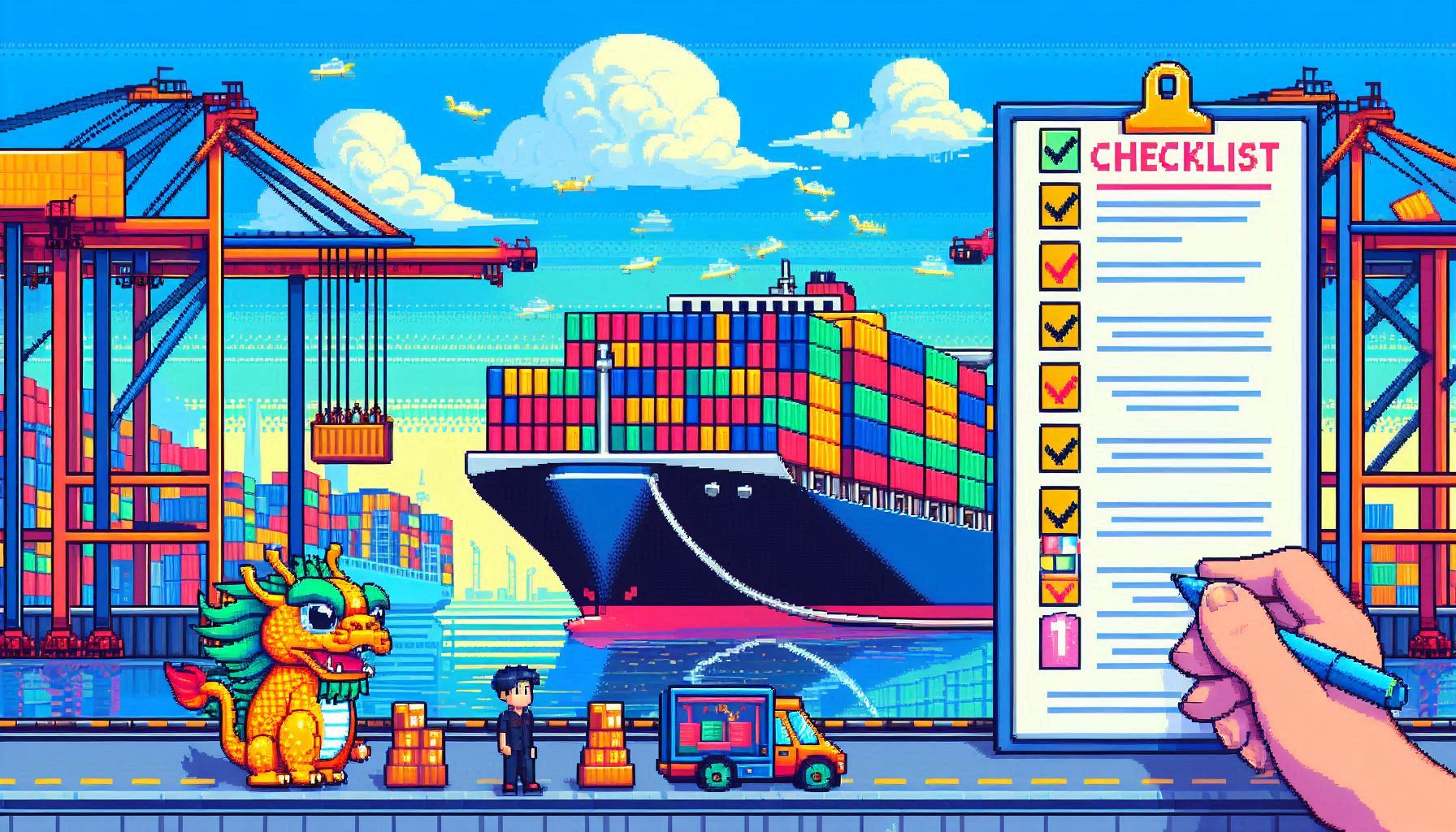The advantages and disadvantages of sea freight from China. Learn about cost savings, transit times, and environmental impact to make informed shipping decisions for your business.
Did you know that over 90% of world trade is carried by sea? It’s mind-blowing when you think about it. As someone who’s been in the import-export game for years, I can tell you that sea freight from China is the backbone of global commerce. But like anything in life, it’s not all smooth sailing (pun intended). There are ups and downs, pros and cons that you need to navigate carefully.
Key Takeaways:
- Sea freight is cost-effective for large shipments and heavy goods
- It’s more environmentally friendly than air freight
- Longer transit times are the main drawback
- Customs procedures can be complex but manageable
In this article ‘What Are the Pros and Cons of Sea Freight from China?’, I’m going to break down the advantages and disadvantages of sea freight from China. Whether you’re a seasoned importer or just dipping your toes into the vast ocean of international trade, this guide will help you make informed decisions about your shipping strategy.

The Advantages of Sea Freight from China
Let’s start with the good stuff. There are some serious perks to choosing sea freight for your Chinese imports.
1. Cost-effectiveness for large shipments
If you’re moving big volumes, sea freight is your best friend. I remember when I first started importing, I was shocked at how much cheaper it was to ship by sea compared to air, especially for large quantities. The per-unit cost drops significantly as you fill up those massive containers.
2. Ability to transport heavy and bulky goods
Got a shipment of heavy machinery or oversized furniture? Sea freight’s got you covered. There’s simply no comparison when it comes to handling those weighty or awkwardly shaped items that would cost a fortune to ship by air.
3. Large cargo capacity
With sea freight, you’re dealing with serious volume. A standard 40-foot container can hold up to 26 tons of cargo. That’s a lot of products! This massive capacity allows for economies of scale that other shipping methods just can’t match.
4. More environmentally friendly than air freight
In today’s world, we can’t ignore the environmental impact of our business decisions. Sea freight has a significantly lower carbon footprint compared to air freight. If you’re looking to reduce your company’s environmental impact, choosing sea over air can make a big difference.
5. Suitable for non-urgent deliveries
If time isn’t of the essence, sea freight is perfect. It’s ideal for those shipments where you can plan ahead and don’t need the goods immediately. This slower pace can actually be a blessing, giving you more time to prepare for the arrival of your goods.
The Disadvantages of Sea Freight from China
Now, let’s talk about the not-so-great aspects of sea freight. It’s important to go into this with your eyes wide open.
1. Longer transit times compared to air freight
This is probably the biggest drawback. Sea freight is slow. We’re talking weeks, not days. A shipment from Shanghai to Los Angeles might take 2-3 weeks, while the same journey by air could be completed in a couple of days.
2. Potential delays due to weather conditions or port congestion
The sea can be unpredictable. I’ve had shipments delayed by storms, and don’t even get me started on port congestion. Remember the Suez Canal blockage in 2021? That single incident caused global ripple effects in shipping for months.
3. Higher risk of damage or loss during long journeys
The longer your goods are in transit, the more opportunities there are for something to go wrong. While modern container ships are incredibly safe, accidents can happen. Always make sure you have good insurance!
4. Less flexibility in routing and scheduling
Ships follow fixed routes and schedules. If you miss a sailing, you might be waiting a week or more for the next one. It’s not like air freight where there are multiple flights every day.
5. Complexity in documentation and customs procedures
Sea freight often involves more paperwork and complex customs procedures. It’s not rocket science, but it can be a headache if you’re not prepared or experienced in dealing with it.

Cost Considerations: Is Sea Freight Always Cheaper?
Sea freight costs aren’t just about the base rate. You’ve got to factor in:
– Base ocean freight rates
– Fuel surcharges
– Terminal handling charges
– Inland transportation costs
– Customs clearance fees
– Insurance
These can add up quickly, especially for smaller shipments.
Comparison with air freight costs for different shipment sizes
For large, heavy shipments, sea freight is almost always cheaper. But for smaller, lighter goods, air freight can sometimes be more economical. It’s all about the volume-to-weight ratio.
Hidden costs to watch out for
Watch out for things like:
– Demurrage and detention charges if you don’t pick up your container on time
– Storage fees at the port
– Additional handling for hazardous materials
– Peak season surcharges
These can sneak up on you if you’re not careful.
When sea freight might not be the most cost-effective option
If you’re shipping small quantities of high-value goods, air freight might actually work out cheaper. Also, if you need your goods urgently, the cost of lost sales due to slow sea freight might outweigh the cheaper shipping costs.
Transit Times: Managing Expectations with Sea Freight
Understanding and managing transit times is crucial when using sea freight.
Average transit times from major Chinese ports to US/EU destinations
Here are some typical transit times:
– Shanghai to Los Angeles: 14-18 days
– Shenzhen to Rotterdam: 30-35 days
– Ningbo to New York: 35-40 days
Remember, these are just port-to-port times. Door-to-door delivery will take longer.
Factors affecting transit times
Transit times can be affected by:
– Port congestion
– Weather conditions
– Customs delays
– Transshipment (when your container needs to change ships)
Strategies for dealing with longer shipping times
To manage longer transit times:
1. Plan ahead and order well in advance
2. Use reliable tracking systems
3. Build buffer time into your supply chain
4. Consider keeping higher inventory levels
When to consider expedited sea freight services
If you need your goods faster but still want to use sea freight, look into expedited services. They’re pricier than standard sea freight but still cheaper than air freight.
Environmental Impact of Sea Freight from China
In our eco-conscious world, it’s important to understand the environmental implications of your shipping choices.
Carbon footprint comparison: sea vs. air freight
Sea freight produces significantly less CO2 per ton-mile compared to air freight. We’re talking about 10-40 times less! That’s a massive difference.
Initiatives for greener sea freight
The shipping industry is working on becoming greener. Some initiatives include:
– Slow steaming to reduce fuel consumption
– Using cleaner fuels like LNG
– Developing more efficient ship designs
– Exploring alternative propulsion methods like wind-assisted technologies
Balancing environmental concerns with business needs
It’s a tricky balance. While sea freight is more eco-friendly, it’s also slower. You need to weigh the environmental benefits against your business needs for speed and flexibility.
The future of sustainable sea freight
Keep an eye on developments like:
– Electric and hydrogen-powered ships
– Carbon offsetting programs
– More stringent international regulations on emissions
Navigating Customs and Regulations for Sea Freight
Customs can be a maze, but with the right knowledge, you can navigate it smoothly.
Overview of customs procedures for sea freight
The basic process involves:
1. Filing import documents
2. Customs inspection (if required)
3. Payment of duties and taxes
4. Release of goods
Common regulatory challenges for Chinese imports
Watch out for:
– Changing tariffs (especially given recent trade tensions)
– Strict regulations on certain products (like electronics or food items)
– Intellectual property issues
Tips for smooth customs clearance
1. Ensure all your documentation is accurate and complete
2. Understand the Harmonized System (HS) codes for your products
3. Be aware of any specific regulations for your type of goods
4. Consider using a customs broker for complex shipments
The role of freight forwarders in managing customs issues
A good freight forwarder can be worth their weight in gold. They can:
– Handle all the paperwork
– Deal with customs on your behalf
– Advise on regulations and potential issues
– Help resolve problems if they arise
Making the Decision: When to Choose Sea Freight from China
So, when should you opt for sea freight? Here’s my take:
Ideal scenarios for using sea freight
– Large volume shipments
– Non-urgent deliveries
– When cost is a primary concern
– For heavy or bulky items
Products best suited for sea transportation
– Furniture
– Machinery
– Bulk commodities
– Non-perishable goods
Balancing cost, time, and product characteristics
It’s all about finding the right balance for your specific situation. Consider:
– How urgently you need the goods
– The nature of your products
– Your budget
– Your inventory management strategy
Integrating sea freight into your supply chain strategy
Think long-term. Sea freight can be a key part of a robust supply chain strategy, especially when combined with good forecasting and inventory management.

Financial Aspects of Sea Freight
Let’s dive a bit deeper into the financial side of sea freight from China. It’s not just about the upfront costs – there are several financial factors to consider.
Currency Exchange Risks
When you’re dealing with international trade, currency fluctuations can have a big impact on your bottom line. The Chinese Yuan to US Dollar or Euro exchange rate can affect your shipping costs and the overall price of your goods.
I’ve seen businesses caught off guard by sudden currency swings. It’s worth considering hedging strategies or working with a financial advisor to manage this risk.
Payment Terms and Methods
The way you pay for your sea freight can affect your cash flow and risk exposure. Common payment methods include:
1. Cash in Advance: Low risk for the shipper but ties up your capital.
2. Letter of Credit: Provides security for both parties but can be complex and costly.
3. Documentary Collection: A middle ground in terms of risk and cost.
4. Open Account: Highest risk for the shipper but most favorable for you as the buyer.
In my experience, building a good relationship with your freight forwarder and shipping line can sometimes lead to more favorable payment terms.
Insurance Considerations
We touched on insurance briefly, but let’s delve a bit deeper. Marine cargo insurance is crucial for protecting your goods during transit. There are different types of coverage:
1. Total Loss Only: The cheapest option, but only covers complete loss of goods.
2. With Average: Covers partial loss or damage above a certain percentage of the insured value.
3. All Risk: The most comprehensive coverage, protecting against a wide range of perils.
Don’t skimp on insurance to save a few bucks. I’ve seen businesses nearly go under because they weren’t adequately insured when disaster struck.
Regulatory Landscape and Compliance
Navigating the regulatory landscape of international shipping can feel like trying to sail through a rocky strait in heavy fog. But understanding the rules is crucial for smooth operations.
International Maritime Organization (IMO) Regulations
The IMO sets global standards for the safety, security, and environmental performance of international shipping. Key regulations to be aware of include:
1. SOLAS (Safety of Life at Sea) Convention: Sets minimum safety standards for merchant ships.
2. MARPOL (Marine Pollution) Convention: Aims to prevent pollution from ships.
3. Ballast Water Management Convention: Requires ships to manage their ballast water to help stop the spread of invasive aquatic species.
Compliance with these regulations can affect shipping costs and schedules, so it’s important to stay informed.
Country-Specific Regulations
Different countries have their own import regulations that can affect sea freight from China. For instance:
1. USA: The Customs-Trade Partnership Against Terrorism (C-TPAT) program offers benefits to companies that meet certain security standards.
2. EU: The Union Customs Code (UCC) harmonizes customs procedures across EU member states.
3. Australia: The Australian Trusted Trader program provides trade facilitation benefits to accredited businesses.
Always research the specific requirements for your destination country to avoid costly delays or penalties.
Sea freight from China is a complex but fascinating world. It’s got its challenges, from long transit times to complex regulations, but it also offers incredible opportunities for businesses willing to navigate its waters.
Remember, success in using sea freight from China isn’t just about finding the cheapest rate. It’s about understanding the entire process, managing risks, staying compliant with regulations, and keeping an eye on emerging trends and technologies.
Whether you’re a seasoned importer or just starting out, I hope this deep dive into the pros and cons of sea freight from China has given you valuable insights. The sea freight industry is always evolving, so keep learning, stay flexible, and don’t be afraid to seek expert advice when you need it.
Frequently Asked Questions (FAQs)
1. How long does sea freight from China to the US/EU typically take?
It usually takes 2-4 weeks to the US West Coast, 4-6 weeks to the US East Coast, and 4-6 weeks to major European ports.
2. What’s the minimum shipment size for sea freight to be cost-effective?
Generally, sea freight becomes cost-effective for shipments over 200-250 kg or 1-2 cubic meters.
3. How can I track my sea freight shipment from China?
Most shipping lines and freight forwarders offer online tracking systems using your Bill of Lading number.
4. What insurance options are available for sea freight from China?
You can typically choose between basic carrier liability or comprehensive all-risk insurance. I always recommend the latter for valuable shipments.
5. Can sea freight handle temperature-sensitive goods from China?
Yes, with refrigerated (reefer) containers. However, this is more expensive than standard containers.
6. How does peak season affect sea freight costs and transit times?
Peak season (usually August to October) can lead to higher rates and longer transit times due to increased demand.
7. What’s the difference between FCL and LCL in sea freight?
FCL (Full Container Load) means you’re shipping a full container. LCL (Less than Container Load) means your goods share a container with other shipments.
8. How can I reduce the risk of delays in sea freight from China?
Choose reliable shipping lines, work with experienced freight forwarders, and allow buffer time in your planning.
9. Are there any restrictions on goods that can be shipped via sea freight?
Yes, there are restrictions on hazardous materials, and some goods require special permits or handling.
10. How do I choose a reliable sea freight forwarder for Chinese imports?
Look for forwarders with experience in China trade, good reviews, clear communication, and competitive rates. Don’t just go for the cheapest option!
In conclusion, sea freight from China can be a cost-effective and environmentally friendly option for many businesses. However, it requires careful planning and consideration of various factors. By understanding the pros and cons, you can make informed decisions that benefit your business in the long run. Remember, in the world of international trade, knowledge is power. Happy shipping!



